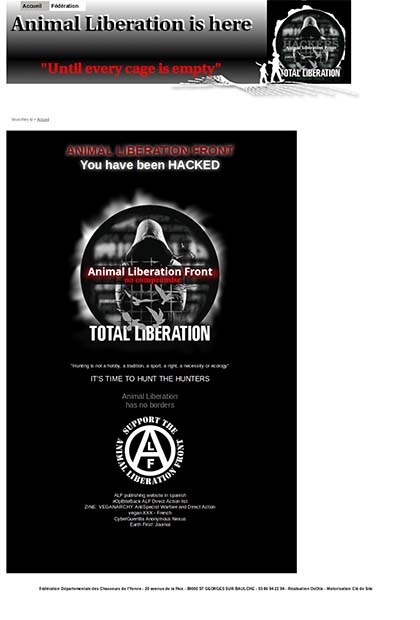

This resulted in ferry companies involved in live exports to pull out due to fear for their staff and their safety. Another round of devices by the now quite violent group were claimed to be increasingly sophisticated and random yet again injured staff, this time of Stena Sealink, which were attacked in Gloucestershire, Oxford, Edinburgh and Kent, in connection with the live exports trade. Shortly after, the group set fire to two boats belonging to the owner of Garetmar kennels (formally known as Cottagepatch) in Hampshire and sent two videos disguised incendiary devices to the Boots store in Cambridge, which was intercepted, and another to the British National Party (BNP) HQ in South London injuring Alfred Waite. Michael Howard, at the time Home Secretary, also received one. Tom King, a former defence secretary, was sent an incendiary device, which failed to explode, after he defended foxhunting during a debate in parliament. In 1994, a rat trap equipped with razor blades was sent to Prince Charles after he took his sons on their first foxhunt. 1994 Īctivists working as the Justice Department have sent out letter bombs and envelopes rigged with poisoned razor blades. Boots issued an alert to their eleven hundred stores after one customer bought one of the products and contacted the police who deactivated the device. Days later the group targeted Boots in Cornwall, publicly stating that they had placed their products on their shelves with devices. He opened the package which exploded in his face. It targeted the manager of GlaxoSmithKline in Hereford, who was also a member of the RSPCA's animal experimentation advisory board and Institute of Animal Technicians council. Eleven more devices were intercepted by Special Branch at sorting offices with one that was not recovered. The first recorded Justice Department action took place during Christmas 1993, when two foot long poster tubes with explosive devices were sent to Shamrock Farm, a supplier of primates for animal research the action carried claims of HIV-infected needles. In testimony to the Senate in 2005, Jerry Vlasak stated that he regarded violence against Huntingdon Life Sciences as an example of extensional self-defense.
ANIMAL LIBERATION FRONT WEBSITE CODE
Extensional self-defense is justified, he writes, because animals are "so vulnerable and oppressed they cannot fight back to attack or kill their oppressors." Best argues that the principle of extensional self defense mirrors the penal code statues known as the " necessity defense," which can be invoked when a defendant believes that the illegal act was necessary to avoid imminent and great harm. Steven Best has coined the term "extensional self-defense" to describe actions carried out in defense of animals by human beings acting as "proxy agents." He argues that, in carrying out acts of extensional self-defense, activists have the moral right to engage in acts of sabotage or even violence.

Template:Cquote Extensional self-defense Robin Webb has implied that Justice Department and ALF activists, as well as the ARM, may be the same people noting that:

The existence of activists calling themselves the Justice Department or Animal Rights Militia (ARM), another name used to inflict violence, reflects a struggle within the Animal Liberation Front and the animal rights movement in general, between those who believe violence is justified, and those who insist the movement should reject it in favour of nonviolent resistance. Some ALF activists reject the association, telling the newspaper: "You cannot be in favour of animal rights and at the same time attack people because at the end of the day people are animals, too." In The Independent newspaper it was claimed that the Justice Department is regarded as the "terrorist wing" of the Animal Liberation Front (ALF). The group formed the same leaderless-resistance model as the ALF, which consists of small, autonomous, covert cells acting independently. The Justice Department's manifesto is posted on the Animal Liberation Front (ALF) website.


 0 kommentar(er)
0 kommentar(er)
